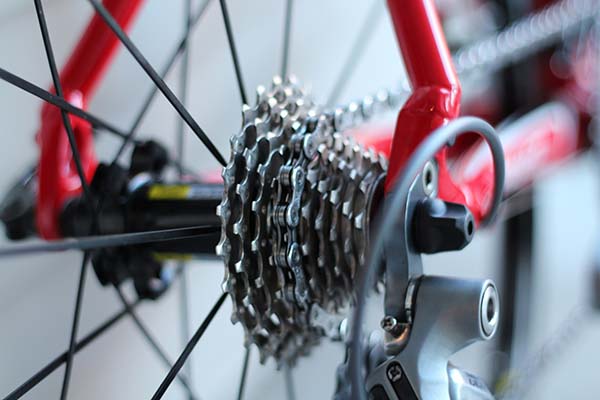When I first hopped on a bike with gears, I thought, How hard can it be? Turns out, pretty hard if you don’t know what you’re doing. The first time I tried tackling a hill, I shifted at the wrong time, felt the pedals jam, and came to a complete, embarrassing stop halfway up. Let’s just say I’ve learned a thing or two since then, and I’m here to save you from the same fate. Shifting gears isn’t just about making pedaling easier or harder—it’s about riding smarter and more efficiently.

What Are Bike Gears, Anyway?
Think of bike gears as your secret weapon against changing terrain. They adjust the resistance you feel while pedaling. Lower gears reduce resistance, making it easier to climb hills or ride against the wind, while higher gears let you zip along flat roads or power through descents.
Your bike has two sets of gears:
- Front gears (chainrings): These handle the big jumps in resistance.
- Rear gears (cassette): These fine-tune your pedaling effort.
The left shifter controls the front gears, while the right one handles the rear. That’s it in a nutshell, though it can feel a lot more complicated when you’re actually riding.
My Rookie Mistakes
I’ll admit, I’ve been that person grinding up a hill in the wrong gear, cursing my legs for giving out. One time, I even dropped my chain mid-shift because I waited too long to switch to an easier gear. Pro tip: shifting under pressure is like trying to run a marathon in flip-flops—it’s just not going to end well.
One major lesson? Always anticipate. If you see a hill coming, shift down before you start climbing. Your bike will thank you, and so will your knees.
How to Shift Gears Like a Pro
1. Timing Is Everything
Shifting is all about foresight. Keep your eyes on the road ahead and anticipate changes in elevation. If you’re approaching a climb, downshift to an easier gear while you’re still on flat ground. On descents or fast flats, shift to a harder gear to maintain speed without over-spinning.

2. Lighten the Pedal Pressure
When shifting, ease up on how hard you’re pedaling. This reduces strain on your chain and helps your gears engage smoothly. I used to mash the pedals while shifting, and let me tell you, the clunk-clunk sound was not a confidence booster.
3. Cadence Is Key
Your cadence—or how fast your legs are spinning—matters more than you might think. A sweet spot is around 80–100 revolutions per minute (RPM). If you’re pedaling slower than that, shift down to make it easier. Spinning too fast? Shift up and let your bike do more of the work.
Avoid These Common Pitfalls
Cross-Chaining
Ever notice your chain making an awkward grinding noise? That’s probably cross-chaining, which happens when your chain is stretched diagonally, like when you’re in the smallest chainring up front and the smallest cog in the back. It’s inefficient and wears out your drivetrain faster. Stick to a more neutral chain alignment to keep things smooth.
Shifting Too Late
We’ve all been there—waiting until the hill gets steep before fumbling with the gears. By then, it’s usually too late. Make shifting part of your preparation, not a last-minute scramble.
Practice Makes Perfect
I remember spending an afternoon riding circles around a quiet park just to practice shifting. I’d go up and down small inclines, experimenting with gears to see how they felt. At first, it felt clunky, like learning to drive a manual car. But over time, I started to feel the rhythm—when to shift, how much to adjust, and how to keep the ride smooth.
Here’s a quick exercise: find a stretch of road with gentle slopes and practice shifting both up and down before you really need to. You’ll build muscle memory and start to feel the gears working with you rather than against you.

Tools and Tech That Make Shifting Easier
If you’re riding with mechanical shifters, regular maintenance is crucial. Clean and lubricate your chain often, and keep an eye on wear and tear. A worn chain or cassette can make even perfect technique feel clunky.
For those who love tech, electronic shifting systems like Shimano Di2 or SRAM eTap are game-changers. They’re precise, quiet, and eliminate a lot of the guesswork. When I upgraded to an electronic system, it felt like cheating—but in the best way possible.
What to Do When You Mess Up
Sometimes, even seasoned riders mis-shift. If your chain slips or falls off, stop pedaling immediately. Trying to force it back on while pedaling can cause damage. Instead, gently guide the chain back onto the sprockets (use gloves if you don’t want greasy hands), then pedal lightly to reset.
Final Thoughts
Shifting gears on a bike isn’t just a skill; it’s an art. It takes a little practice, some trial and error, and a willingness to laugh at yourself when things don’t go perfectly. Once you get the hang of it, though, it’ll transform your rides.
Remember: anticipate the terrain, lighten your pedal stroke, and don’t be afraid to experiment. Every rider’s style is different, but the key is to find what works for you. And hey, if you mess up, just smile, fix the chain, and get back in the saddle.




